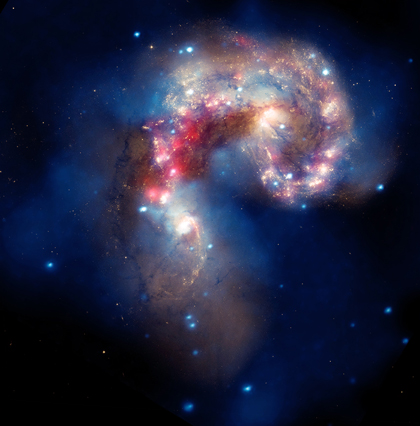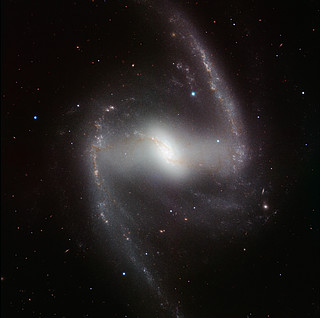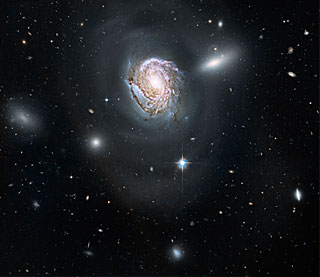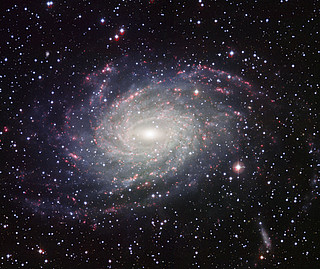
Tribal tattoo designs
src :http://dclips.fundraw.com

Samara Tribal tattoo designs
src :http://www.samarapai.com








The NASA/ESA Hubble Space Telescope captures a complex network of gas clouds and star clusters within our neighbouring galaxy, the Large Magellanic Cloud. This region of energetic star birth is one of the most active in the nearby Universe.
The Large Magellanic Cloud contains many bright bubbles of glowing gas. One of the largest and most spectacular is LHA 120-N 11, from the catalogue compiled in 1956 by the late astronomer and astronaut Karl Henize. It is informally known as N11.
Close up, N11’s billowing pink clouds of glowing gas resemble a puffy swirl of fairground candyfloss. From further away, its distinctive overall shape led some observers to nickname it the Bean Nebula. The dramatic and colourful features in the nebula are the telltale signs of star birth.
N11 is a well-studied region that extends across 1000 light-years. It is the second largest star-forming region within the Large Magellanic Cloud and has produced some of the most massive stars known.
 Blog posts labeled "readings"
Blog posts labeled "readings" Items saved at Diigo
Items saved at Diigo
The Antennae galaxies, located about 62 million light years from Earth, are shown in this composite image from the Chandra X-ray Observatory (blue), the Hubble Space Telescope (gold and brown), and the Spitzer Space Telescope (red). The Antennae galaxies take their name from the long antenna-like "arms," seen in wide-angle views of the system. These features were produced by tidal forces generated in the collision.
The collision, which began more than 100 million years ago and is still occurring, has triggered the formation of millions of stars in clouds of dusts and gas in the galaxies. The most massive of these young stars have already sped through their evolution in a few million years and exploded as supernovas.
The X-ray image from Chandra shows huge clouds of hot, interstellar gas that have been injected with rich deposits of elements from supernova explosions. This enriched gas, which includes elements such as oxygen, iron, magnesium and silicon, will be incorporated into new generations of stars and planets.

A new image taken with the powerful HAWK-I camera on ESO’s Very Large Telescope at Paranal Observatory in Chile shows the beautiful barred spiral galaxy NGC 1365 in infrared light. NGC 1365 is a member of the Fornax cluster of galaxies, and lies about 60 million light-years from Earth. ...
The new infrared images from HAWK-I are less affected by the dust that obscures parts of the galaxy than images in visible light and they reveal very clearly the glow from vast numbers of stars in both the bar and the spiral arms. These data were acquired to help astronomers understand the complex flow of material within the galaxy and how it affects the reservoirs of gas from which new stars can form. The huge bar disturbs the shape of the gravitational field of the galaxy and this leads to regions where gas is compressed and star formation is triggered. Many huge young star clusters trace out the main spiral arms and each contains hundreds or thousands of bright young stars that are less than ten million years old. The galaxy is too remote for single stars to be seen in this image and most of the tiny clumps visible in the picture are really star clusters. Over the whole galaxy, stars are forming at a rate of about three times the mass of our Sun per year.
While the bar of the galaxy consists mainly of older stars long past their prime, many new stars are born in stellar nurseries of gas and dust in the inner spiral close to the nucleus. The bar also funnels gas and dust gravitationally into the very centre of the galaxy, where astronomers have found evidence for the presence of a super-massive black hole, well hidden among myriads of intensely bright new stars.

A long-exposure Hubble Space Telescope image shows a majestic face-on spiral galaxy located deep within the Coma Cluster of galaxies, which lies 320 million light-years away in the northern constellation Coma Berenices.
The galaxy, known as NGC 4911, contains rich lanes of dust and gas near its center. These are silhouetted against glowing newborn star clusters and iridescent pink clouds of hydrogen, the existence of which indicates ongoing star formation. Hubble has also captured the outer spiral arms of NGC 4911, along with thousands of other galaxies of varying sizes. The high resolution of Hubble's cameras, paired with considerably long exposures, made it possible to observe these faint details.
NGC 4911 and other spirals near the center of the cluster are being transformed by the gravitational tug of their neighbors. In the case of NGC 4911, wispy arcs of the galaxy's outer spiral arms are being pulled and distorted by forces from a companion galaxy (NGC 4911A), to the upper right. The resultant stripped material will eventually be dispersed throughout the core of the Coma Cluster, where it will fuel the intergalactic populations of stars and star clusters.

 Blog posts labeled "readings"
Blog posts labeled "readings" Items saved at Diigo
Items saved at Diigo
A billowing cloud of hydrogen in the Triangulum galaxy (Messier 33), about 2.7 million light-years away from Earth, glows with the energy released by hundreds of young, bright stars. This NASA/ESA Hubble Spare Telescope image provides the sharpest view of NGC 604 so far obtained.
Some 1500 light-years across, this is one of the largest, brightest concentrations of ionised hydrogen (H II) in our local group of galaxies, and is a major centre of star formation.
The gas in NGC 604, around nine tenths of it hydrogen, is gradually collapsing under the force of gravity to create new stars. Once these stars have formed, the vigorous ultraviolet radiation they emit excites the remaining gas in the cloud, making it glow a distinct shade of red. This colour is typical not only of NGC 604 but of other H II regions too.



| Someya, S., Yu, W., Hallows, W., Xu, J., Vann, J., Leeuwenburgh, C., Tanokura, M., Denu, J., & Prolla, T. (2010). Sirt3 Mediates Reduction of Oxidative Damage and Prevention of Age-Related Hearing Loss under Caloric Restriction Cell, 143 (5), 802-812 DOI: 10.1016/j.cell.2010.10.002 |
Star formation is one of the most important processes in shaping the Universe; it plays a pivotal role in the evolution of galaxies and it is also in the earliest stages of star formation that planetary systems first appear.
Yet there is still much that astronomers don’t understand, such as how do the properties of stellar nurseries vary according to the composition and density of the gas present, and what triggers star formation in the first place? The driving force behind star formation is particularly unclear for a type of galaxy called a flocculent spiral, such as NGC 2841 shown here, which features short spiral arms rather than prominent and well-defined galactic limbs.
In an attempt to answer some of these questions, an international team of astronomers is using the new Wide Field Camera 3 (WFC3) installed on the NASA/ESA Hubble Space Telescope to study a sample of nearby, but wildly differing, locations where stars are forming. The observational targets include both star clusters and galaxies, and star formation rates range from the baby-booming starburst galaxy Messier 82 to the much more sedate star producer NGC 2841.

This picture of the nearby galaxy NGC 6744 was taken with the Wide Field Imager on the MPG/ESO 2.2-metre telescope at La Silla. The large spiral galaxy is similar to the Milky Way, making this image look like a picture postcard of our own galaxy sent from extragalactic space. The picture was created from exposures taken through four different filters that passed blue, yellow-green, red light, and the glow coming from hydrogen gas. These are shown in this picture as blue, green, orange and red, respectively.

The newly released Hubble image shows a large spiral galaxy, known as UGC 1810, with a disk that is distorted into a rose-like shape by the gravitational tidal pull of the companion galaxy below it, known as UGC 1813. A swath of blue jewel-like points across the top is the combined light from clusters of intensely bright and hot young blue stars. These massive stars glow fiercely in ultraviolet light.
The smaller, nearly edge-on companion shows distinct signs of intense star formation at its nucleus, perhaps triggered by the encounter with the companion galaxy.
